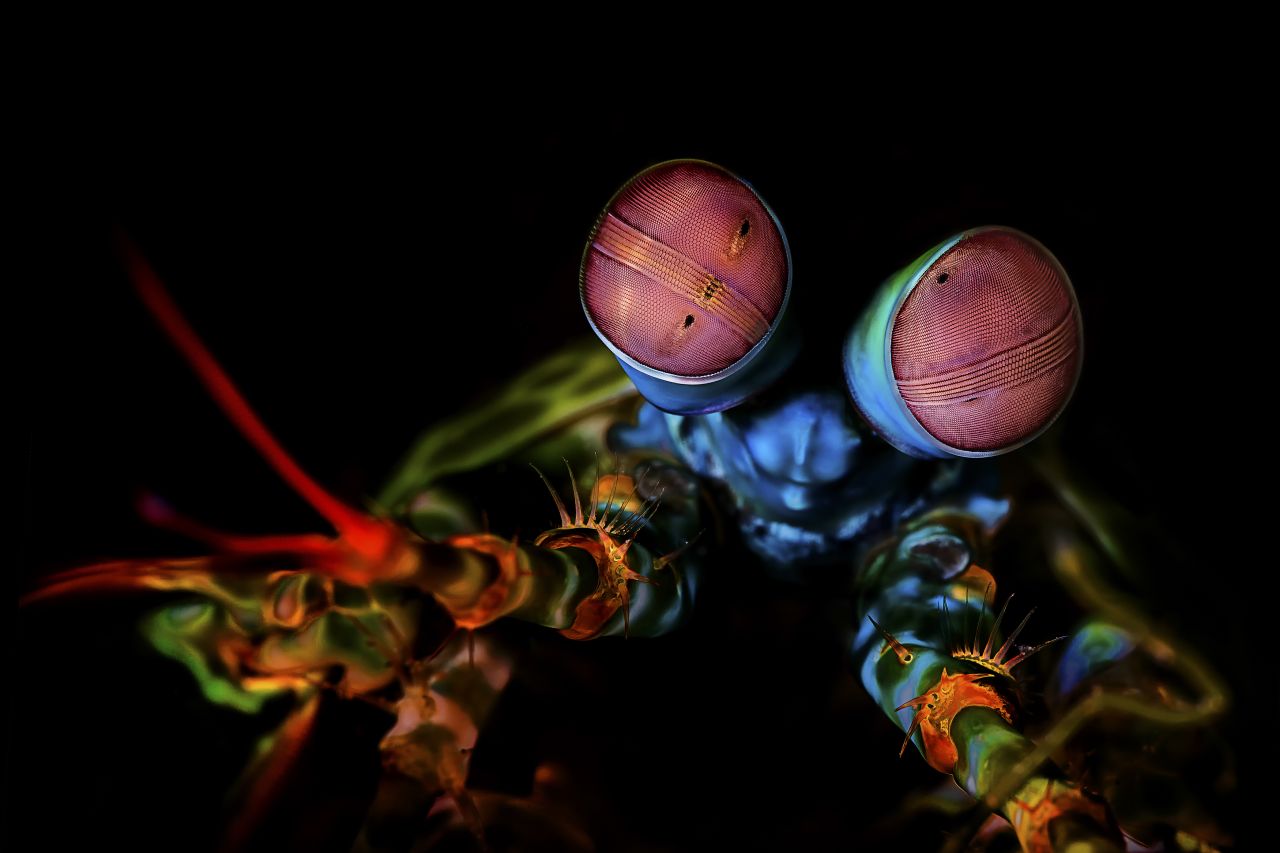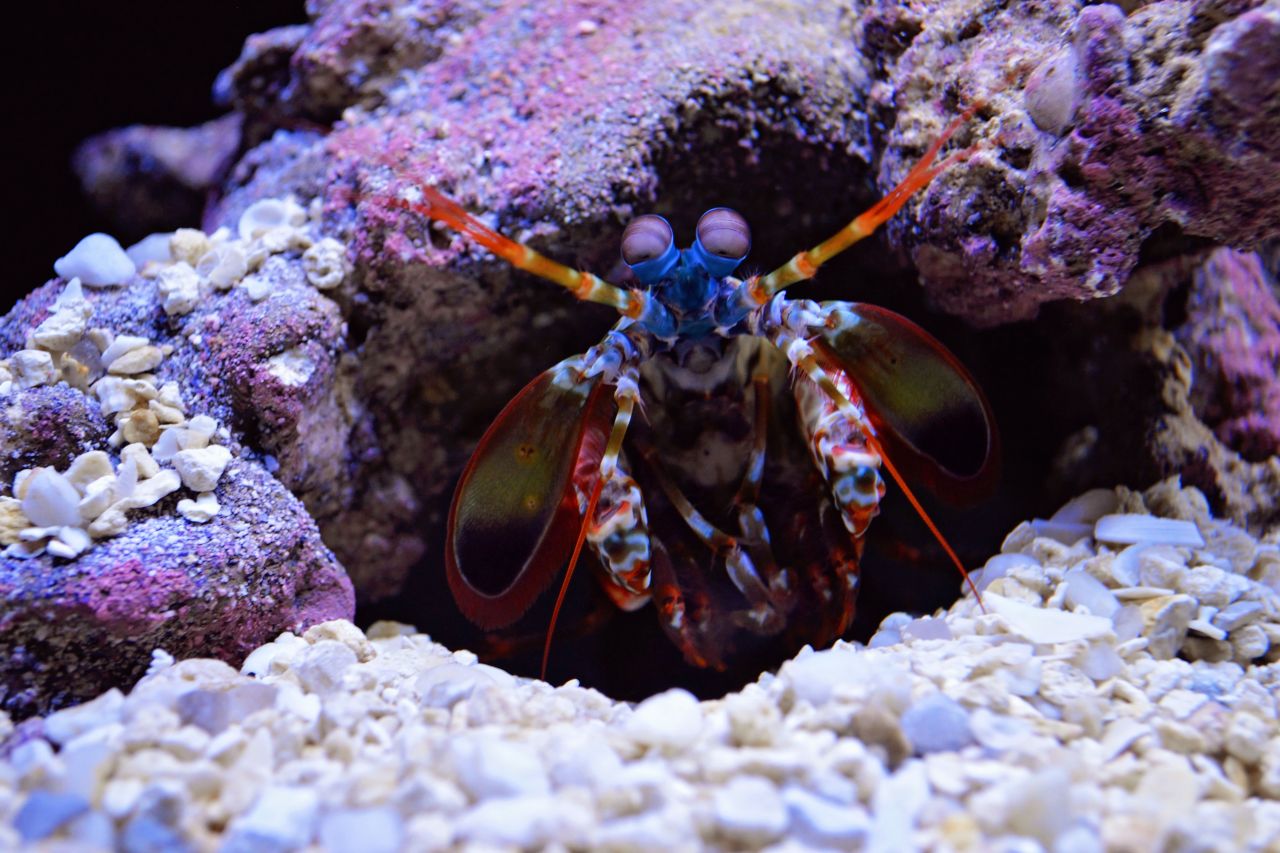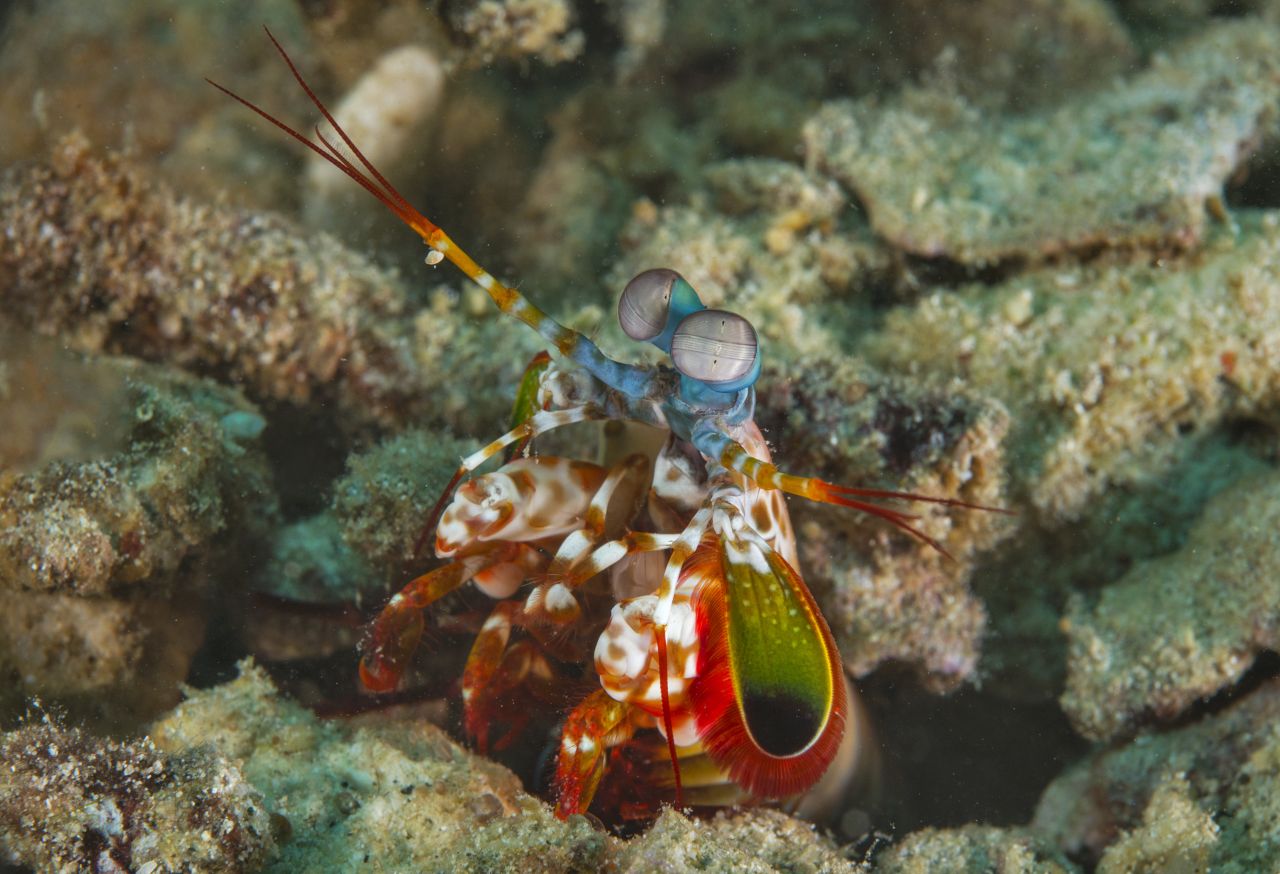Above credit: Jayne Jenkins / Ocean Image Bank
The mantis shrimp has one of the most flamboyant appearances of all the animals in the Aquarium. Although there are around 450 species of mantis shrimp, they are all very distinct in colouration. Peacock mantis shrimps (like the one at the Aquarium) are arguably the most colourful of all, with luminescent purple eyes, bright orange limbs, and striped bodies.
Mantis shrimps are marine Crustaceans of the order Stomatopoda, which translates from “mouth – foot” in Ancient Greek. Stomatopoda have been around for longer than dinosaurs! They appear on the fossil record 400 million years ago, about 170 million years before dinosaurs did.

Twenty-five species of mantis shrimp occur off southern Africa, mostly in tropical waters. They live in burrows hollowed in soft sediments or rock and coral reef crevices. Mantis shrimps are naturally aggressive and vehemently defend their territories against intruders. They often occur in large swarms near the surface, where they are preyed on by seals, hake, and other fishes.
Mantis shrimps are so named because of their similarity in looks to praying mantises. They have a second pair of prey-catching arms that are very large, much like terrestrial mantises. With their large eyes, clasped claws, and elongated body shape, it’s unsurprising that these shrimps are considered the praying mantises of the sea.
Unlike their terrestrial counterparts, mantis shrimps pack a punch – literally! Mantis shrimps are highly specialised predators – all species interact with prey by spearing or smashing with large grasping limbs. “Spearers” hunt by spearing soft-bodied prey (like shrimps and small fishes) with a swift upward lunge of a barbed finger on the claw. “Smashers” punch and immobilise prey (like crabs and molluscs) using the reinforced club or heel of the grasping limb. The force behind the strike is like a bullet and can easily crack the glass of an aquarium! It shows that despite their size, mantis shrimps are impressively powerful.
How do their limbs not break with the force of their punches? Well, mantis shrimp have layers of elastic molecules called polysaccharides beneath the surface of their clubs – these act as shock absorbers. Scientists have studied their cell structure to apply for human use (called biomimicry).
At the Two Oceans Aquarium, our mantis shrimp lives in the Diversity Gallery – visit it and be amazed at its beautiful colours!

Related News
Sign up to our Newsletter
Receive monthly news, online courses and conservation programmes.




